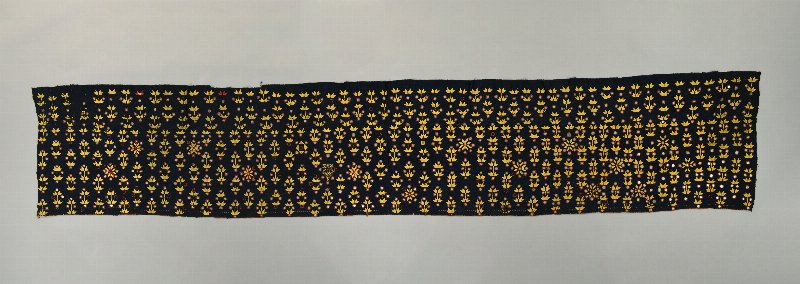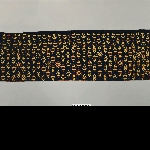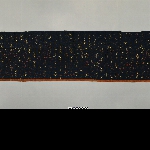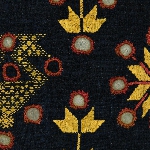Skirt Fragment
29-96-26
From: India | Punjab, India | Haryana | Hisar
Curatorial Section: Asian
| Native Name | Ghagra |
| Object Number | 29-96-26 |
| Current Location | Collections Storage |
| Culture | Indian | Bishnoi | Vishnoi |
| Provenience | India | Punjab, India | Haryana | Hisar |
| Period | 19th Century |
| Date Made | Mid to Late 19th Century |
| Section | Asian |
| Materials | Cotton | Silk | Mirrors |
| Technique | Embroidered | Phulkari | Dyed | Woven | Sewn |
| Iconography | Leaf | Stalk | Plant |
| Description | A length of plain-weave indigo-dyed cotton fabric consisting of two strips sewn together lengthwise, unfinished at top and hemmed with brown facing fabric at bottom, most likely intended for a skirt. Stitched with counted thread embroidery and mirror (abhla or shisha) work in yellow (and some red) floss silk (pat in Punjabi) and brown two-ply twisted cotton thread. The design is a geometric abstraction of plant motifs, consisting of trapezoidal lozenges and thin stems with three mirrors per motif, with motifs stacked vertically in staggered columns. Misalignment with top portion suggests that the two pieces were embroidered separately before being sewn together; mirrors applied along the seam were then embroidered after, strengthening (and perhaps disguising) the connection. The field is sparsely filled (not a bagh design in which the field is covered with stitches). |
| Length | 299.7 cm |
| Width | 66 cm |
| Credit Line | Bequest of Maxwell Sommerville, 1904 |
| Other Number | 453 - Sommerville Oriental Number |
Report problems and issues to digitalmedia@pennmuseum.org.






